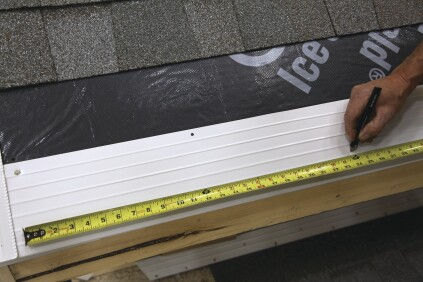Common Drip Edge FAQs: Answers to Your Roofing Questions
- David Jimenez
- Jul 10, 2023
- 2 min read

When it comes to roofing systems, understanding the various components and their functions is essential. One often overlooked but crucial element is the drip edge. If you have questions about drip edges, you're not alone. In this blog, we will address some of the most common drip edge FAQs to provide you with the knowledge you need to make informed decisions about your roofing project. From the necessity of drip edges to installation considerations and material options, we've got you covered. So, let's dive into the frequently asked questions and find the answers you're seeking.
Do all roofs require a drip edge?
Drip edges are highly recommended for all roofs, as they provide crucial protection against water damage. They help prevent water infiltration, rot, and decay by directing water away from vulnerable areas of the roof. While local building codes may vary, it's generally advisable to install a drip edge on any roofing system for optimal performance and longevity.
Can I install a drip edge on an existing roof?
Yes, it is possible to install a drip edge on an existing roof. However, the process may vary depending on the specific circumstances and roofing materials involved. It is generally recommended to consult with roofing professionals to assess the feasibility and best approach for retrofitting a drip edge onto an existing roof.

How long does a drip edge last?
The lifespan of a drip edge can vary depending on the material used and the environmental conditions it is exposed to. Metal drip edges, such as aluminum or galvanized steel, are known for their durability and can last for decades. PVC drip edges also offer excellent longevity, as they are resistant to corrosion and decay. Regular maintenance and inspections can help ensure the continued effectiveness and lifespan of your drip edge.
Is drip edge installation a DIY project?
While some experienced homeowners may choose to install a drip edge themselves, it is generally recommended to hire professionals for proper installation. Installing a drip edge requires precise measurements, alignment, and sealing techniques to ensure its optimal performance. Professional roofers have the necessary expertise and tools to install a drip edge correctly, minimizing the risk of future issues.

Can I use a different material for the drip edge?
Yes, there are various materials available for drip edges, including metal, PVC, and composite options. Metal drip edges are commonly used due to their durability and weather resistance. PVC drip edges are preferred in areas with high moisture levels for their corrosion resistance. It's essential to choose a material that suits your specific roofing needs and consult with professionals for expert advice on the most suitable options.



Comments